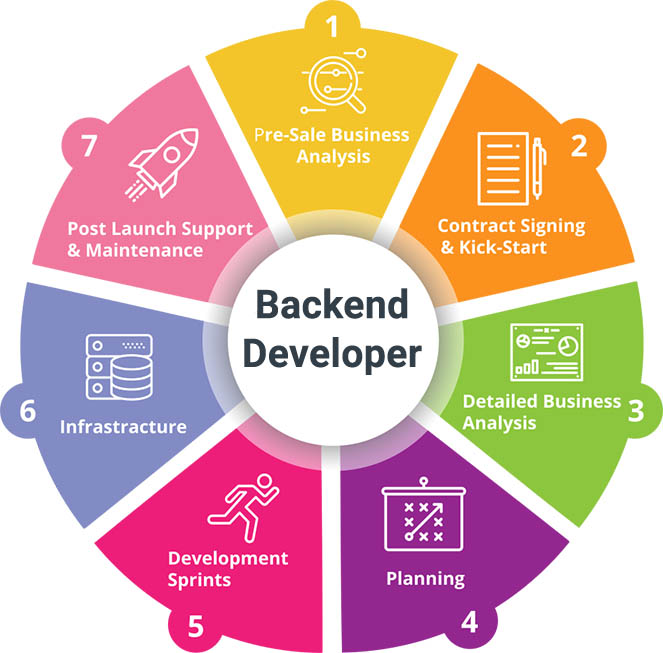Rise by Six: Your Daily Dose of Inspiration
Explore insights and stories that elevate your day.
Back-End Development: The Unsung Hero of Web Performance
Discover how back-end development powers web performance and why it’s the unsung hero your site needs to succeed!
Understanding the Role of Back-End Development in Optimizing Web Speed
Back-end development plays a crucial role in optimizing web speed, as it handles the server-side operations that directly impact how quickly a website responds to user requests. When a user interacts with a website, the back-end processes the data, communicates with the database, and generates the necessary content to be delivered to the user's browser. Efficient back-end coding practices, such as minimizing server response time and optimizing database queries, can significantly enhance the overall web performance. By employing
caching techniques, utilizing content delivery networks (CDNs), and optimizing server resources, developers can ensure that web pages load swiftly, providing users with a seamless experience.
Moreover, the choice of technology and frameworks used in back-end development is vital for maintaining optimal web speed. Lightweight frameworks and programming languages can reduce the server load, while the implementation of microservices architecture promotes scalability and faster response times. Additionally, by monitoring server performance and regularly conducting audits, developers can identify bottlenecks and make targeted improvements. In summary, understanding the intricacies of back-end development is essential for anyone looking to enhance their website's speed and reliability, ensuring that end-users have a positive browsing experience.

Top Back-End Technologies to Enhance Web Performance
In today's fast-paced digital landscape, leveraging the right back-end technologies is crucial for optimizing web performance. Frameworks such as Node.js and Django have gained popularity for their ability to support rapid development and enhance the scalability of applications. Node.js, built on Chrome's V8 JavaScript engine, allows developers to create high-performance applications capable of handling numerous simultaneous connections with ease. Meanwhile, Django, a robust Python framework, offers built-in features such as an ORM (Object-Relational Mapping) and automatic administrative interface, making it an excellent choice for building complex web solutions efficiently.
Furthermore, serverless architecture has emerged as a game-changer in the realm of web performance. Platforms like AWS Lambda and Google Cloud Functions allow developers to run code without provisioning or managing servers, leading to reduced costs and improved performance through automatic scaling. By adopting these cutting-edge back-end technologies, businesses can deliver a more responsive user experience while optimizing resource utilization. As web applications continue to evolve, selecting the right back-end framework and architecture will remain vital in ensuring top-tier web performance.
How Back-End Development Impacts User Experience and Site Efficiency
Back-end development plays a crucial role in shaping user experience by ensuring that web applications run smoothly and efficiently. When the back-end code is well-structured and optimized, it results in faster load times, which directly impacts how users perceive a site. If a page takes too long to load, users may abandon it altogether. According to studies, even a one-second delay can lead to significant decreases in user satisfaction and engagement. Therefore, back-end developers must prioritize performance by implementing effective caching strategies and optimizing database queries to enhance overall site efficiency.
Another critical aspect of back-end development is its influence on site efficiency through the management of server resources and data storage. A well-designed back-end system utilizes resources effectively, ensuring that applications can handle simultaneous requests without lagging. This is particularly important for sites with high traffic volumes. Implementing technologies such as load balancers and microservices can significantly improve a site's scalability and reliability. Ultimately, the combination of a robust back-end architecture and efficient resource management leads to a superior user experience, keeping visitors engaged and returning for more.